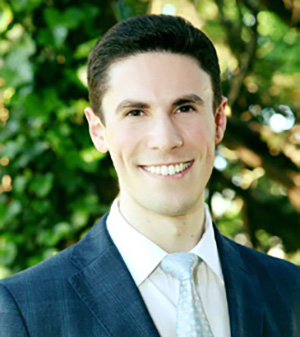
The journey from Rosh Chodesh Elul through Yom Kippur is a 40-day experience of self-awareness, teshuva, and spiritual growth, whereby we come closer than ever to Hashem and our true selves. This process of closeness culminates in the holiday of Sukkot, which represents the ultimate connection between Hashem and the Jewish people. The center of this connection is the sukkah, which represents the marriage canopy as klal Yisrael marries Hashem. As we approach this time of closeness, let us delve into the meaning of the sukkah and the lessons it holds for us.
Chazal cryptically compare the s’chach of the sukkah to the ideal form of beauty. What does this mean?
The spiritual concept of beauty, and its relevance to marriage, is central to the connection we aim to develop through the process of Sukkot. In order to understand this connection, let us delve into the spiritual concept of beauty. To do so, we must understand the unique beauty of Sarah Imeinu.
Sarah Imeinu
Sarah Imeinu was the most beautiful woman in the world. This beauty was not only spiritual beauty, a description of her immense holiness and spiritual stature. Sarah’s beauty was physical as well, as proclaimed by Chazal in the Gemara and midrash (Bava Batra 58a, Bereishit Rabbah 45:4) and testified to by the Egyptian people and Pharaoh himself. When Avraham and Sarah descended to Mitzrayim to escape the famine in the land of Eretz Yisrael, the Egyptian people, and even Pharaoh himself, desired Sarah. The Egyptians, worshippers of immorality, were interested only in the kind of beauty that ran skin deep. Their fixation on Sarah was not spiritually motivated, rather based in physical desire alone. However, this physical beauty was not Sarah Imeinu’s defining trait. Sarah, foremother of the entire Jewish people, gained her status and prominence through her immense spiritual prowess. Her unmatched physical beauty was accompanied by the ultimate in spiritual beauty. This is the definition of true beauty, and this incredible balance is reflected in a second name the Torah calls Sarah. At the end of Parshat Noach, Rashi (Bereishit 11:29) clarifies that “Yiscah” is another name for Sarah Imeinu. A name always reflects essence, which means that the meaning of Yiscah perfectly captures Sarah Imeinu’s nature. Yiscah means transparent, and Sarah’s complete beauty lay in her transparency. Her inner beauty permeated her physical body. True beauty is when the physical body reflects a spiritual inner core, a depth that is infinitely greater than any external beauty. True beauty is oneness, where the physical and spiritual come together perfectly and melt into a oneness. Sara Imeinu modeled this beauty, and this is why she was ultimately beautiful both physically and spiritually. This is the beauty that we look to emulate—a beauty in which the physical does not hide the inner self, but reveals it.
The connection between Sarah Imeinu’s middah of transparency and our connection to Hashem through Sukkot is striking. Yiscah, another name for Sarah Imeinu, shares the same root as s’chach, the roof of the sukkah. Within halachic thought, the ikar (central component) of the sukkah is the s’chach. What, though, does transparency have to do with s’chach and the sukkah? The answer lies in the very deep theme of Sukkot itself.
Sukkot is about seeing past the illusion of self-security, and recognizing that Hashem is our only true source of protection. This is why we leave our physical dwellings, our sturdy homes, and reside instead within a dirat arai, a temporary dwelling place. The sukkah is a spiritual hut of connection between us and Hashem, where we show how completely we rely on him. While on the surface, our security and safety seem to come only from our own efforts and hishtadlut, when we look past the surface we recognize that everything comes from Hashem. This is why the s’chach is the main component of the sukkah: s’chach trains us to see past the surface. In order to be valid, s’chach must be transparent, allowing us to see past our physical sukkahs into the endless night sky. (You must be able to see the stars at night. It must also allow the sunlight to pour in from outside and must be loose enough to allow rain into the sukkah as well.) When we look up, we must see Hashem behind His physical mask, we must recognize the spirituality inherent behind this physical world. Only with a transparent surface can we truly tap into that internal truth.
Two Levels of Reality
This is the most powerful message of life. There are always two levels of reality: the surface level and the deeper, spiritual level. The surface is meant to reflect the spiritual, reveal it, emanate its truth and beauty. But often we struggle, we forget, we get caught up in the deception that the surface is all that there is. But even when we fail, even when we fall, there is always hope, there is always a path back to our true selves. This is the message of Sukkot; this is the message of life. To strive to see more, feel more, learn more, become more. May we all be inspired to not only see past the surface, but to then reveal that truth through the surface, to live holistic lives of truth, spiritual beauty, and true oneness.
Shmuel Reichman is an inspirational speaker who has lectured internationally at shuls, conferences and Jewish communities on topics of Jewish thought and Jewish medical ethics. He is the founder and creator of “Shmuel Reichman Inspiration: Think. Feel. Grow.,” a platform from which he shares inspirational Torah videos that have reached over 100,000 people. You can find more inspirational lectures, videos and articles from Shmuel on YUtorah.org and Facebook and he can be reached at [email protected].










